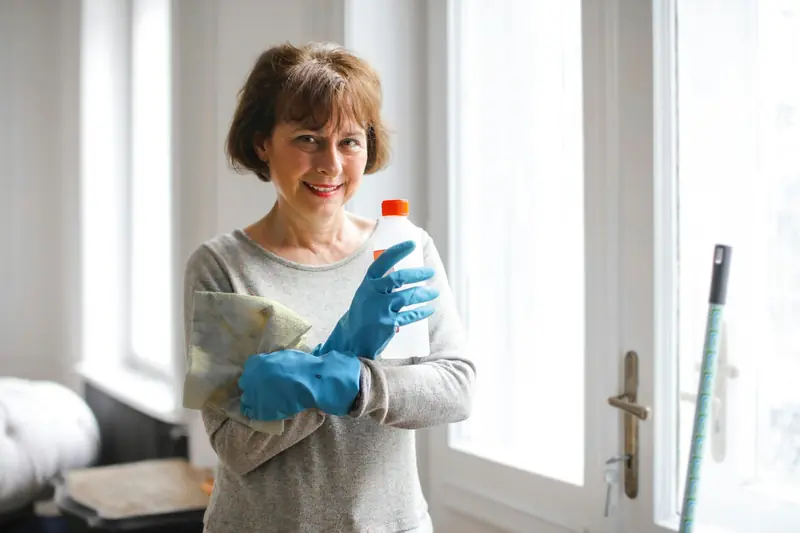
The cleaning power of household soap, baking soda, lemon, vinegar, and their combinations will shatter the common misconceptions about the complexity of tackling everyday stains.
Understanding the Origins
The success of stain removal hinges on choosing the right cleaning method. Before attempting to remove greasy stains or paint marks, it’s essential to understand their nature and identify the type of fabric involved. Assess the material’s composition and its reaction to the stain remover on a “test sample” by cutting a small piece of fabric from a hidden area, such as a hem or seam. This is particularly crucial when deciding to use bleach for stain removal. While bleach is considered an effective agent, it is unsuitable for most colored fabrics. When dealing with patterned or colored materials, it’s wise to test the chosen product on a fragment of the fabric and a simulated stain from a similar substance. This precaution will prevent irreversible damage to the item if the pattern or dye proves unstable against the chosen chemical.
Stain categories based on treatment methods:
- water-soluble: stains from certain water-soluble dyes, water-soluble salts, sugary food products, carpenter’s glue, etc.;
- soluble in organic solvents (alcohol or gasoline): stains from grease, cream, resin, wax, gutalin, mastic, oils, varnish, etc.;
- insoluble in water and organic solvents: stains from insoluble natural and synthetic dyes, liquid paints, manure, blood, urine, mold, rust (oxidized salts and metals), tannins, and proteins.
Certain types of stains (from oil paint, wine, fruit juice, coffee, cocoa, and even dust) can be removed not only with water-soluble stain removers but also with those designed for greasy and insoluble stains.
Identifying Stains
Easy-to-remove greasy stains are often left by wax, vegetable oils, and animal fats. Harder-to-remove greasy stains include marks from oil paint, varnish, resin, etc. The contours and color of the stains will guide you in removing them: these characteristics can help determine the “age” of the stain. A fresh grease stain will always appear darker than the fabric it has stained. The older the grease stain, the lighter and less shiny it becomes (eventually turning matte). An old grease stain penetrates deep into the fibers, often becoming visible on the reverse side of the material. On the fabric, such grease stains lack clear outlines: their edges are blurred, and the contours take on a radiating shape.
Most often, we deal with stains of a mixed composition containing both greasy and non-greasy substances. Depending on the fat content, the edges of such stains may be more or less defined. Stains from milk, coffee with milk, sauces, soups, blood, dust, etc., typically remain on the surface of materials, with only the fats in their composition penetrating deeper into the fabric.
Non-greasy stains (from tea, wine, beer, fruit juice, fresh fruits, etc.) exhibit a yellowish-brown color range and distinct outlines, where the edges appear darker than the stains themselves. Under the influence of light, oxygen, and other factors, stains from tea, coffee, wine, fruits, berries, mold, cosmetics, etc., oxidize and become increasingly difficult to remove.
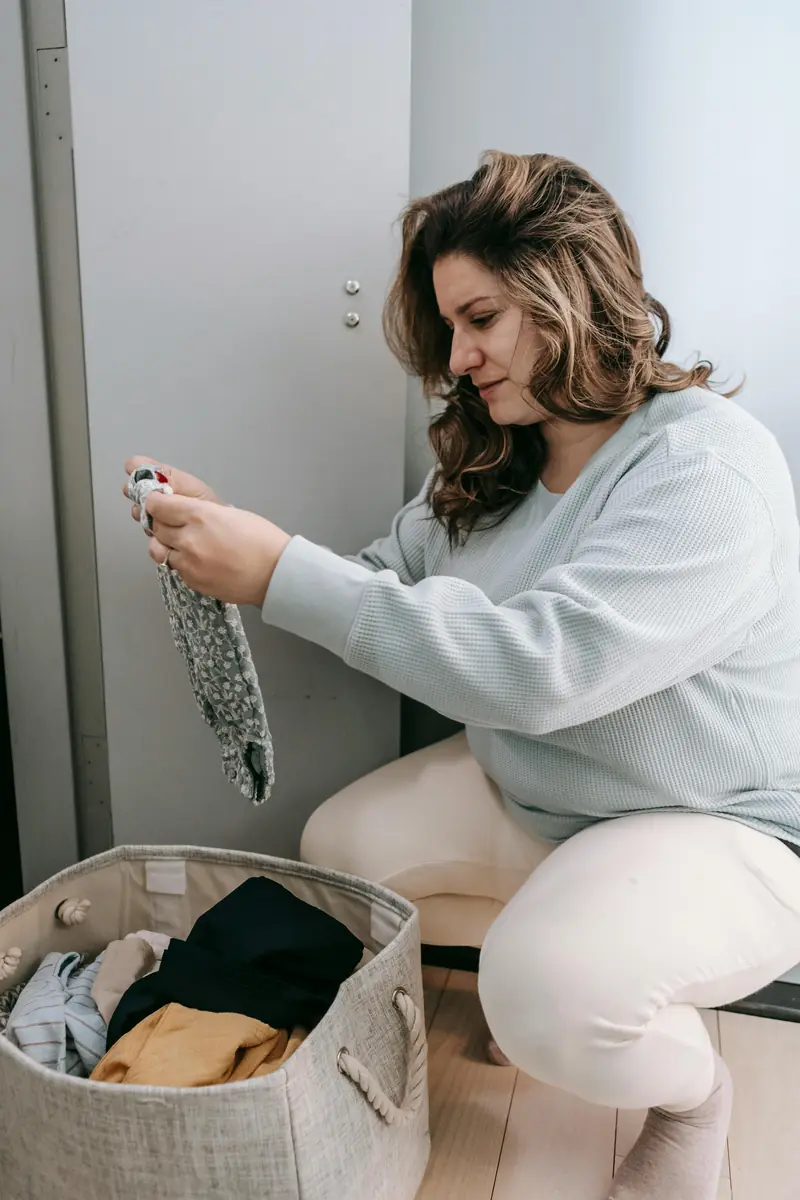
Precautions
The stain removal process begins with cleaning the stained area of dust—first, brush it with a dry brush, then follow up with a damp one. Always treat the stain from the reverse side, placing absorbent paper (like a paper towel) underneath the fabric. It’s best to work on a solid surface covered with several layers of uncolored fabric.
Most fresh stains can be removed by rinsing with water: start with cold water, then switch to hot. Since some materials can stain even with plain water, it’s wise to test this cleaner as well.
Clean stains using a soft brush, white cloth, or cotton. Dampen the area around the stain first, gradually moving to the stain itself and treating it from the edge toward the center (this prevents the stain from spreading). Begin cleaning with a weak solution and gradually increase its concentration as needed. When tackling stains of any complexity, avoid using overly concentrated solutions. Instead of increasing the “strength” of the stain remover, it’s recommended to repeat the treatment multiple times with a weak solution. Simply treat the stain several times, alternating the application of the product with rinsing with water.
It’s best not to apply multiple different products to the stain at once: for example, a stain remover, baking soda, and powder. This can bleach the fabric and damage its structure. Remember that even organic acids and solvents can be contraindicated for certain fabrics. For instance, using vinegar to remove stains is not advisable on nylon. Acetic acid destroys acetate and triacetate materials, while acetone dissolves acetate, triacetate, and polyvinyl chloride fibers. The safest stain removal method for unknown stains is a water solution of ammonia and salt. For old stains on delicate fabrics, it’s better to leave it to the dry cleaners.
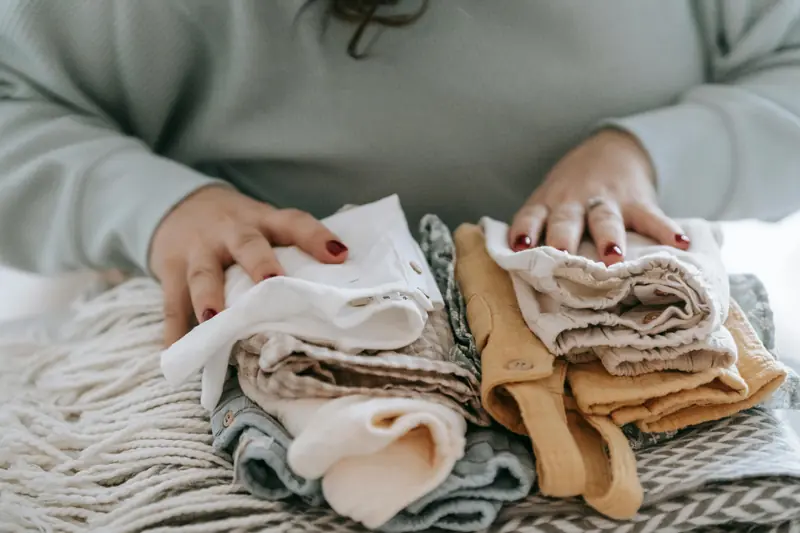
How to Remove Greasy Stains
Removing a fresh greasy stain is often the easiest task. The less time that has passed since the stain appeared, the easier it is to remove. Simply blot the stain with a paper towel and never rub it: this will push the grease deeper into the fibers and complicate removal. If you can’t wash the grease stain immediately, sprinkle it with salt or sugar, and wash it as soon as possible.
Talc
This method is suitable only for fresh stains that haven’t dried. Dust the stained area with baby powder or talc. After a few hours, the thick layer of absorbent will soak up the grease from the fibers. Once the treatment is complete, brush off the talc or hygienic powder and wash the fabric.
Vinegar
The simplest degreaser is regular table vinegar. To remove greasy stains, mix it with water in a 1:4 ratio (1 tablespoon of vinegar to 4 tablespoons of water). Apply the solution to the greasy stain, wait a few minutes, and rinse the treated area with warm water, then wash the item to eliminate the vinegar smell.
Baking Soda
The advantage of baking soda is that it leaves no odor. Mix the baking soda with a minimal amount of water to create a thick paste. Apply the mixture to the entire greasy stain, scrub with an old toothbrush (rubbing is only allowed on dense textures), and after half an hour, rinse with warm water. For old greasy stains, a thick paste made from grated household soap, baking soda, and water will help.
Household Soap
Thoroughly wet the stained area with warm water and treat it with household soap (72%). For deep stains, sprinkle grated soap on the area and scrub with a soft brush or sponge, if the fabric thickness allows (for coarse fibers). Leave the soap on the fabric to take effect. The duration of action depends on the complexity of the stain: if a fresh stain can be removed in 20 minutes, treating an old one may take from several hours to a day. After removing the soap residue with a cloth or cotton pad, wash the item with laundry detergent or another washing agent.
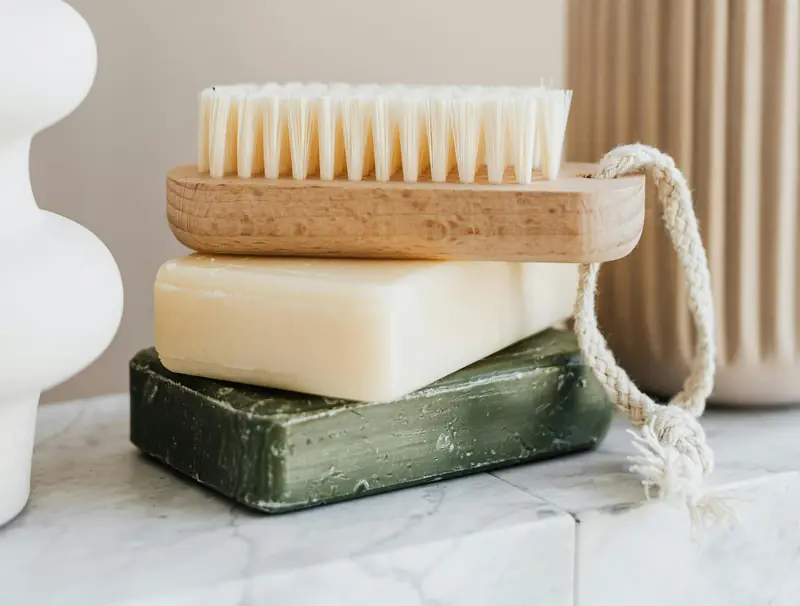
Dishwashing Liquid
Treat the fresh stain with the product, wait a few minutes, and then wash it. For old and stubborn stains, leave the product on for 10 minutes. Dissolve the stain remover or laundry powder in hot water, soak the stained item for at least half an hour, and wash it in the washing machine at the highest temperature setting indicated on the label.
Commercial Stain Removers
A commercial alternative to home remedies for tackling stains is chemical stain removers. They come in the form of soap, powder, gel, sticks, or sprays. However, be cautious: store-bought products are not suitable for all fabrics. Always read the instructions before using household chemicals.
Fabric Care Guidelines
How to remove greasy stains from different materials?
Silk
When removing greasy stains from natural silk, avoid using stain removers and laundry powders. This delicate fabric cannot be washed in hot water, rubbed, wrung out, or ironed without adhering to temperature guidelines. To remove a greasy stain from silk, use talc. Sprinkle the stain, cover it with a paper towel, and press with an iron set to the lowest heat setting.
Synthetic Fabrics
Polyester and other synthetic fibers present challenges for cleaning, as these fabrics quickly absorb grease. Greasy stains from synthetics can be removed with ammonia, baking soda, vinegar, or dishwashing liquid.
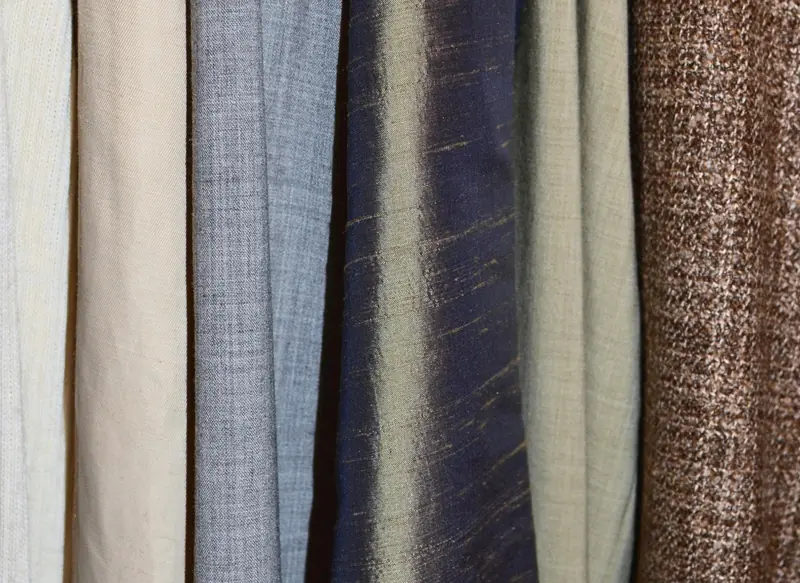
Denim
Classic denim fabrics contain natural fibers, making stains easier to remove than from synthetics. Fresh greasy stains can be blotted with a paper towel, sprinkled with salt or sugar, and then washed with laundry detergent.
Wool
To treat a greasy stain on wool fabric, use chalk or talc: apply the treatment, cover with a paper towel, and press with an iron. You can shake off the talc or chalk after half an hour. A brush is only used on dense wool fabrics—like coat or suit wool. In complex cases, the cleaning process can be repeated.
Cleaning Leather
It would be a mistake to think that grease is not a problem for leather. Never apply oil to leather items, as it will ruin them. After rain, leather jackets, caps, and shoes should be allowed to dry naturally, and then treated with glycerin to prevent scuffs and creases. We dedicated an entire article to shoe care during the spring and fall seasons—you can read it here. Water stains on shiny leather can be removed with an eraser. Wet items made from fine leather should be wiped with a mixture of milk and turpentine, then treated with a colorless cream and polished with a brush to shine. Wet leather gloves can be saved by applying baby cream or colorless shoe cream. Leave the treated items overnight, then apply a special silicone cream to the leather.
To restore the uniform color of leather items, wipe them with a soft brush. Rubbing leather items with freshly cut orange peel can help restore their attractive appearance. To refresh the smell of leather goods, use a mixture of water with soap and ammonia, but after such treatment, don’t forget to wipe the leather with a cloth dampened with castor oil, petroleum jelly, or glycerin. To prevent leather shoes from hardening after drying, they should be wiped with petroleum jelly, and after a few hours, cleaned and polished to shine. If stains remain after drying, rinse them with warm soapy water and wipe dry with flannel.
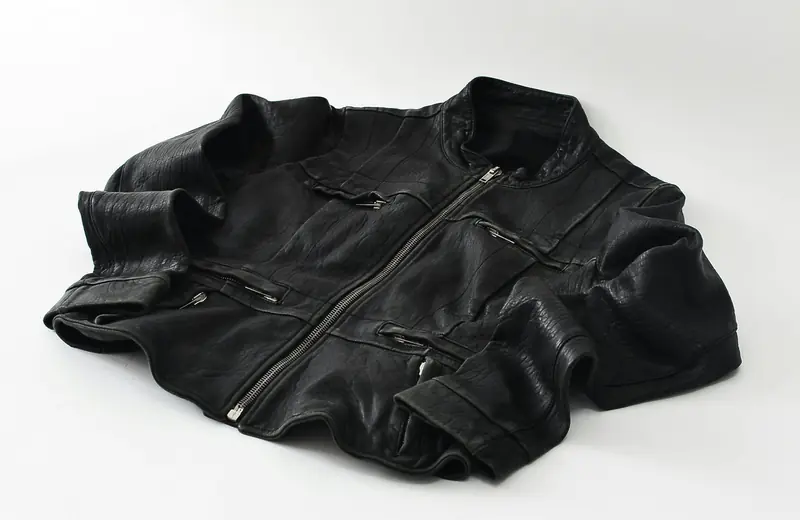
For cleaning leather sofas and chairs, you can dilute a capful of leather cleaning liquid in a bucket of hot water, dip a microfiber cloth into the solution, wring it out, and wipe the soft furniture. Leather can also be wiped with a solution of lanolin soap (glycerin) followed by removing the detergent with a damp cloth. To freshen leather items, add a few drops of olive oil to the damp cloth you use to wipe them, and after half an hour, dry the leather. Old stains on leather can be removed with toothpaste, cologne, or hairspray: apply them to the stain for a few seconds and wipe with a damp cloth. Ink stains (from ballpoint pens) can be removed from leather with acetone-free nail polish remover.
Cleaning Suede
This delicate material cannot be washed. If you spill wine on suede, do not sprinkle the stain with salt (this method is only suitable for fabrics). Wine stains on suede surfaces can be removed with warm soapy water. Similar stains can only be removed with chemical cleaning. A stain that has deeply penetrated the fibers can be treated with alcohol or vinegar, while dry stains on suede can be removed with a clean eraser. For fresh stains, sprinkle cornstarch or baby powder on them: they will absorb the grease, after which you only need to treat the stained area with flannel or a special brush to smooth the fibers. The nap will straighten better if you hold the suede over steam from a boiling kettle.
You can also clean suede differently: rub the stain with a dry soap bar and then lightly wipe with a damp cloth. To prevent white marks from appearing on suede shoes, clean them immediately after coming indoors: wipe wet stains with ammonia or soap and remove any remaining dirt with a damp cloth. Dirt from suede shoes can be removed with fine-grit sandpaper, and dust can be brushed away. Outdoor dirt is easier to remove from dry suede. For cleaning light natural suede, use a water solution of ammonia (ratio of ammonia to water is 1:4).
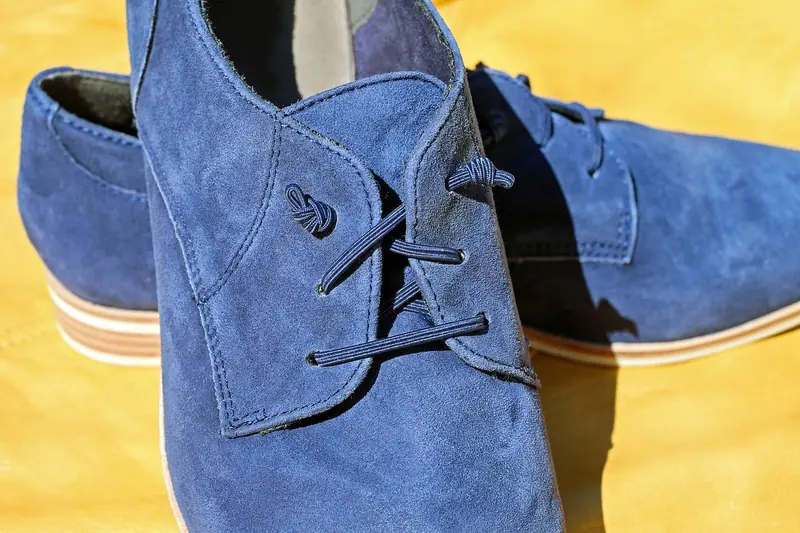
How to remove greasy stains from suede? Exclusively through dry cleaning. Blot the stain with a paper towel, allowing the grease to absorb, and sprinkle the greasy mark with talc, baby powder, or cornstarch. After waiting 3-5 hours, remove the powder with a dry brush. Shiny stains can be removed with cornstarch, a mixture of ammonia and water (ratio 1:2), or diluted vinegar (1 teaspoon of vinegar per 1 liter of water). Dampen a cotton pad, blot the stain, and wipe the soiled area. Rinse the solution immediately. Light suede can be cleaned with milk and baking soda. Mix 1 tablespoon of baking soda in a glass of milk, wipe the stain, and rinse the mixture with water. To avoid a trip to the dry cleaners, stains from protein products (milk, ice cream, or eggs) should be removed immediately, while the dirt is still wet. Rinse a fresh stain with warm water, dry at room temperature, and treat with a brush.
Removing Mold and Rust
To eliminate mold stains, patchouli oil can be helpful: add a few drops to water and spray this solution on the mold stain. For black and green stains, a concentrated solution of household soap or tea tree oil can help. You can treat the surface with a warm solution of baking soda, vinegar, or a mixture of table vinegar and hydrogen peroxide. Sprinkle mold stains with baking soda and pour vinegar over them. Mold stain treatment can also be done with urea or school glue.

A highly effective recipe is to dilute 1.5 liters of table vinegar, 1 liter of borax, and 400 grams of boric acid in 10 liters of water. Heat the solution to 50 degrees Celsius and apply it to mold stains using a brush or sponge. Mold on book pages can be removed with a water solution of formalin. To prevent mold stains in closets, it’s recommended to place camphor, as it absorbs moisture.
Rust stains on fabrics can be tackled with a mixture of lemon juice and salt or a mixture of lemon juice and vinegar (1:1). Leave these mixtures on rust stains for 15 minutes, scrub with a brush, rinse with water, and dry. You can also remove rust stains from fabric using lemon juice: dampen the rust mark, press with a cloth, and rinse with warm water. To remove rust from colored fabrics, use a mixture of grated white chalk or talcum powder, water, and glycerin in equal proportions. Leave the mixture on the stain for a day, then wash as usual. For white fabric, a 2% solution of hydrochloric acid can help remove rust. After soaking the fabric in this solution until the stain disappears, rinse the item in water with ammonia (3 tablespoons of ammonia per 1 liter of water). An essential condition: do not extend the time for stain removal arbitrarily, as it will ruin the item.
P.S. For more practical tips on stain removal, stay tuned for upcoming hacks from HouseWife experts.
